
We’ve heard it all since the Mazda RX-8 made its debut in 2003. From rumours suggesting Mazda’s rotary engine R&D is in full swing, to the company denying it’ll ever build a Wankel engine or a rotary sportscar again.
Only 12 months ago, Mazda president and CEO Masamichi Kogai told US site Automotive News, “We don’t have that kind of vehicle in our future product plan,” when asked about a new RX-badged hero.
The Tokyo Motor Show RX-Vision concept, then, represents yet another backflip from the Hiroshima brand, and brings new hope Mazda will give us a reborn rotary sportscar to follow on from the RX-8, which was discontinued in 2012.
“One day rotary will make a comeback,” said Kogai at the 2015 Tokyo Motor Show. “This gives form to our brand’s vision of the future. It expresses our intention to make rotary. There are many issues to overcome but we will continue our efforts. We’re working steadily. Keep your eyes on Mazda.”
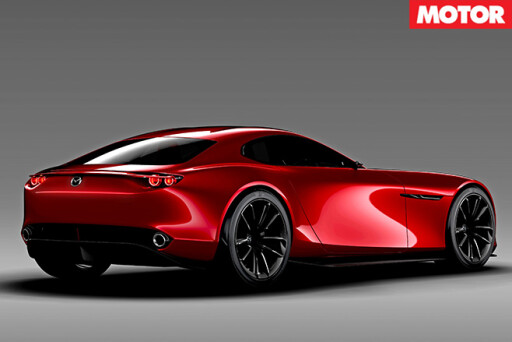 We’ll buzz the redline if a production version of the RX-Vision materialises. It’d be a far more fitting revival than the rotary’s role as a range-extender generator, which was originally mooted for Audi’s A1 E-Tron and a future hybrid Mazda 2 variant.
We’ll buzz the redline if a production version of the RX-Vision materialises. It’d be a far more fitting revival than the rotary’s role as a range-extender generator, which was originally mooted for Audi’s A1 E-Tron and a future hybrid Mazda 2 variant.
This, remember, is an engine with a high profile international motorsport legacy, headlined by Mazda’s quad-rotor-powered 1991 Le Mans 24-hour victory with the 787B sports prototype.
An engine that proved its giant-killing potential at the hands of Allan Moffat in Group C first-generation RX-7 form, in which he put the Mazda rotary firmly on the map by wrestling the 1983 Australian Touring Car Championship from the V8 establishment.
The same engine that, with a twin-turbocharger in the Mazda Motorsport RX-7 SP, shaded Porsche to sweep the Bathurst and later Eastern Creek 12-hour events for production cars from 1992-1995.
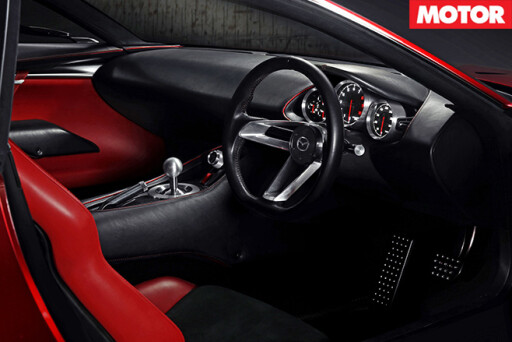 A baby Wankel in an eco-car just wouldn’t be right for a rotary revival. Even in a road-car context, there are few Aussies who haven’t owned a hot rotary, or been treated to a rotary ride to remember.
A baby Wankel in an eco-car just wouldn’t be right for a rotary revival. Even in a road-car context, there are few Aussies who haven’t owned a hot rotary, or been treated to a rotary ride to remember.
This disproportionately raucous little engine made a big impression in Oz over the course of four decades, and we’d love to have it back. Having been bitten once by the concept car hype, however, we’ll keep our excitement in check until we see spy shots of a forthcoming Mazda sportscar.
Looking at the long, low, cab-rearward RX concept, what’s clear is that it previews a focused sportscar, rather than a sporty RX-8 family-car replacement. The RX-8 was not all bad, but it wasn’t exactly a sales success – and it was no RX-7.
An RX-7? We’d place bets on that being the badge worn by a new Mazda sportscar, just as Nissan has stuck with GT-R and Honda with NSX for their latest halo products. There’s decades of marketing and enthusiast sentiment wrapped up with these nameplates and, in the case of the RX-7, it’s a model with a 24-year history (1978-2002).
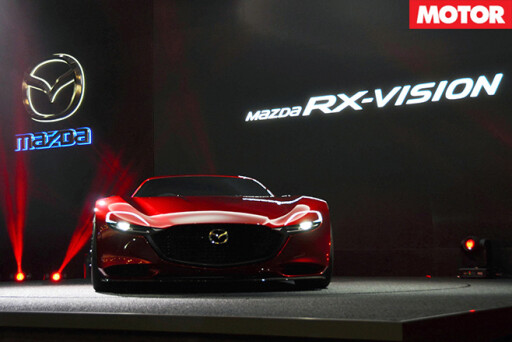 Mazda’s 225kW ‘16X’ engine surfaced in 2007 when it became the powerplant for the brand’s Taiki concept car. The next iteration of the twin-rotor engine, now dubbed the SkyActiv-R, retains the 16X’s 1.6-litre capacity, which is some 23 per cent bigger than that of the 1308cc Renesis used in the RX-8, the origins of which can be traced right back to 1972 when the 13B rotary first appeared in the Mazda Luce/RX-4 coupe and sedan.
Mazda’s 225kW ‘16X’ engine surfaced in 2007 when it became the powerplant for the brand’s Taiki concept car. The next iteration of the twin-rotor engine, now dubbed the SkyActiv-R, retains the 16X’s 1.6-litre capacity, which is some 23 per cent bigger than that of the 1308cc Renesis used in the RX-8, the origins of which can be traced right back to 1972 when the 13B rotary first appeared in the Mazda Luce/RX-4 coupe and sedan.
The SkyActiv-R differs from almost every Mazda rotary produced in that its twin rotors sweep a larger epitrochoidal path to provide the capacity increase. All except the rare 13A engine utilised wider rotors and housings to deliver their extra capacity, including the 10A, 12A, 13B and triple-rotor 20B, in order from smallest to largest.
Mazda’s biggest challenge in bringing the rotary back is meeting today’s ever-tightening fuel consumption and emissions regulations. For a nominally small capacity engine, the Wankel rotary has a lot of combustion chamber area through which heat is wasted, which means its thermodynamic efficiency – and therefore its fuel efficiency – is inherently low.
Last we heard on the grapevine, the rotary R&D department was struggling with both making the new ‘long stroke’ rotary rev and with oil sealing, which, historically, is not a new problem. Company president Kogai admits to the challenges: “Rotary engines have lots of issues, and we need to solve each of them.”
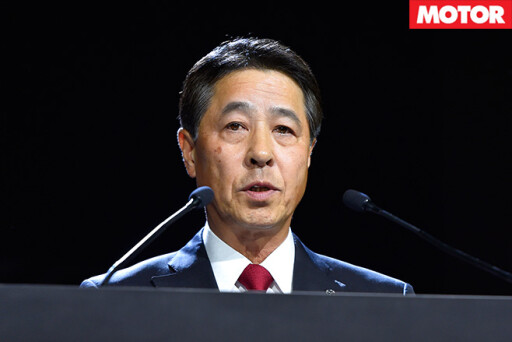 Mazda’s efforts to improve efficiency and emissions under the SkyActiv banner include adapting direct injection to the twin-rotor and readopting turbocharging as a means to deliver competitive fuel economy and high torque in the low rev range.
Mazda’s efforts to improve efficiency and emissions under the SkyActiv banner include adapting direct injection to the twin-rotor and readopting turbocharging as a means to deliver competitive fuel economy and high torque in the low rev range.
It’s possible that homogeneous charge compression ignition (HCCI) could feature in the new rotary, just as it will in Mazda’s next-gen SkyActiv petrol piston engines. This could dictate that the aluminium end/intermediate plates used in the 16X engine would revert to cast iron construction, as per earlier rotaries.
Thankfully, early suggestions that the twin-rotor will be augmented with an electric motor in a parallel hybrid system have been denied. The first and last RX-7s – not so much the second-gen – were renowned for their purity; the latter eschewing all-wheel-drive, and active four-wheel steering (big at the time) to deliver undiluted rear-wheel-drive involvement.
And the next RX-7 looks set to be a pure sports coupe, though there are hints a semi-automatic or dual-clutch gearbox could be part of the package.
 Reintroducing the turbo is good news, because it means the fourth-generation RX-7 will be a hard-hitter, with masses of tuning potential. Even a conservative estimate would put power of the 1.6-litre turbo twin-rotor at 275kW, which would be more than enough in a car that Mazda R&D chief Kiyoshi Fujiwara says would ideally be “lighter than a Cayman”.
Reintroducing the turbo is good news, because it means the fourth-generation RX-7 will be a hard-hitter, with masses of tuning potential. Even a conservative estimate would put power of the 1.6-litre turbo twin-rotor at 275kW, which would be more than enough in a car that Mazda R&D chief Kiyoshi Fujiwara says would ideally be “lighter than a Cayman”.
A turbo rotary doesn’t need to spin as hard as a non-turbo, which is good for engine longevity and viability – remember, the RX-8 made peak power at 8200rpm, and the Renesis is not known for longevity. The design concept suggests a two-seater and it draws obvious inspiration from some of Europe’s best-known high-performance cars.
Few brands are in the position to deliver a relatively affordable, lightweight high-performance coupe with a V12-smooth, high-revving hand-built engine. In fact, we can’t think of any. The car landscape would be richer for having another rotary-engined Mazda in it.
So, will Mazda put the RX-Vision into production and, if so, when will we see it? We’d certainly like to think so, and 2017 could make sense given that it marks 50 years since the Mazda rotary was born in the Cosmo Sport. What is certain is that if Mazda builds another RX-7, we’ll be in a spin.
Wankel wrangling
4 non-Mazda rotary attempts
 The first production car powered by German engineer Felix Wankel’s rotary was the 1964 single-rotor NSU Wankel-Spider.
The first production car powered by German engineer Felix Wankel’s rotary was the 1964 single-rotor NSU Wankel-Spider.
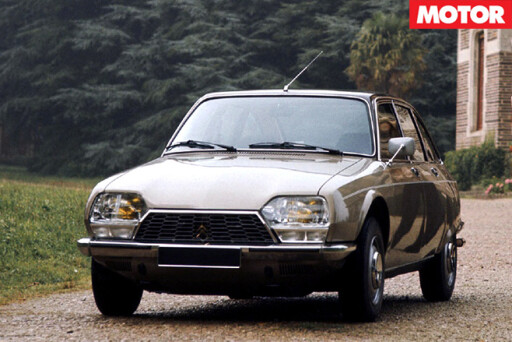 Few 847 GS Birotors survive; the majority were scrapped rather than used as parts for the ill-developed NSU-Citroën engine.
Few 847 GS Birotors survive; the majority were scrapped rather than used as parts for the ill-developed NSU-Citroën engine.

John DeLorean commissioned this stillborn Corvette concept, the Chevy XP-895; a 310kW, mid-engined, quad-rotor coupe.
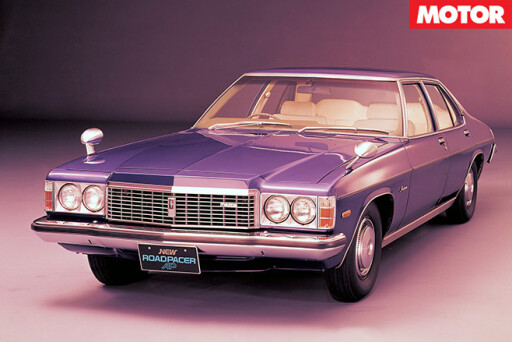 Holden tragics will recognise the Roadpacer as a HJ/HX Premier. They received a Mazda 13B engine and auto ’box in Hiroshima.
Holden tragics will recognise the Roadpacer as a HJ/HX Premier. They received a Mazda 13B engine and auto ’box in Hiroshima.

COMMENTS